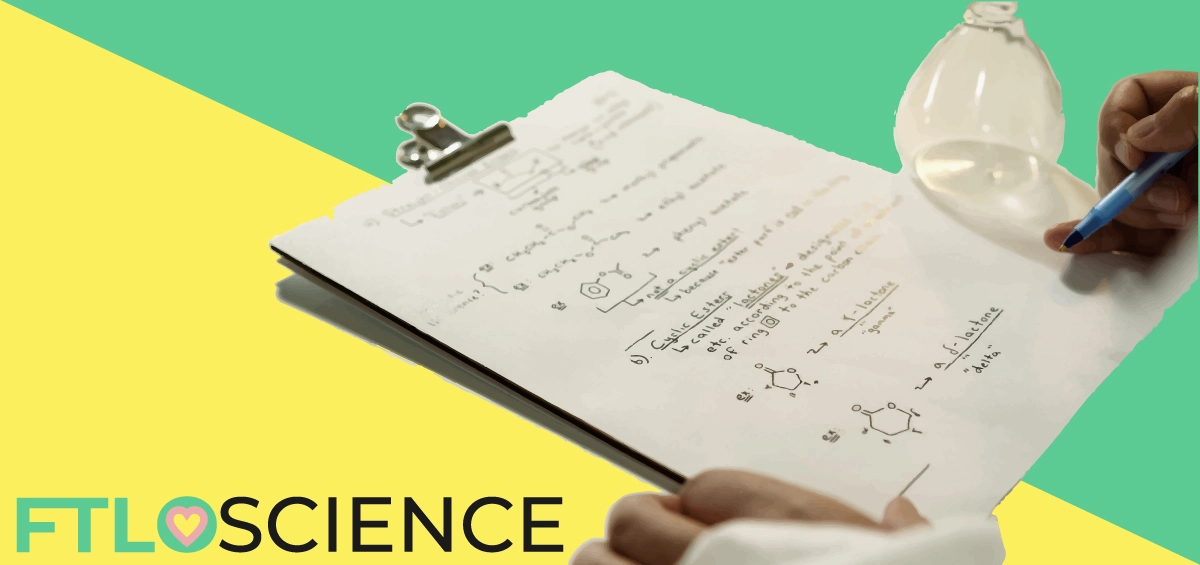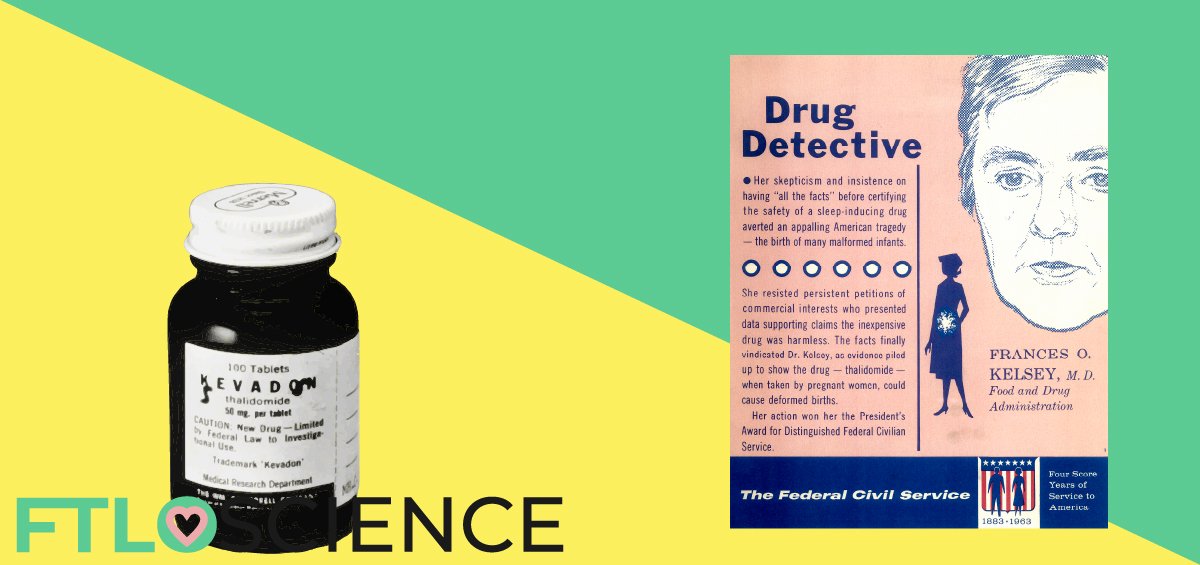Students tend to approach writing lab reports with confusion and dread. Whether in high school science classes or undergraduate laboratories, experiments are always fun and games until the times comes to submit a lab report. What if we didn’t need to spend hours agonizing over this piece of scientific writing? Our lives would be so much easier if we were told what information to include, what to do with all their data and how to use references. Well, here’s a guide to all the core components in a well-written lab report, complete with an example.
Things to Include in a Laboratory Report
The laboratory report is simply a way to show that you understand the link between theory and practice while communicating through clear and concise writing. As with all forms of writing, it’s not the report’s length that matters, but the quality of the information conveyed within. This article outlines the important bits that go into writing a lab report (title, abstract, introduction, method, results, discussion, conclusion, reference). At the end is an example report of reducing sugar analysis with Benedict’s reagent.
Title
The report’s title should be short but descriptive, indicating the qualitative or quantitative nature of the practical along with the primary goal or area of focus.
Abstract
Following this should be the abstract, 2-3 sentences summarizing the practical. The abstract shows the reader the main results of the practical and helps them decide quickly whether the rest of the report is relevant to their use. Remember that the whole report should be written in a passive voice.
Introduction
The introduction provides context to the experiment in a couple of paragraphs and relevant diagrams. While a short preamble outlining the history of the techniques or materials used in the practical is appropriate, the bulk of the introduction should outline the experiment’s goals, creating a logical flow to the next section.
Method
Some reports require you to write down the materials used, which can be combined with this section. The example below does not include a list of materials used. If unclear, it is best to check with your teacher or demonstrator before writing your lab report from scratch.
Step-by-step methods are usually provided in high school and undergraduate laboratory practicals, so it’s just a matter of paraphrasing them. This is usually the section that teachers and demonstrators care the least about. Any unexpected changes to the experimental setup or techniques can also be documented here.
Results
The results section should include the raw data that has been collected in the experiment as well as calculations that are performed. It is usually appropriate to include diagrams; depending on the experiment, these can range from scatter plots to chromatograms.
Discussion
The discussion is the most critical part of the lab report as it is a chance for you to show that you have a deep understanding of the practical and the theory behind it. Teachers and lecturers tend to give this section the most weightage when marking the report. It would help if you used the discussion section to address several points:
- Explain the results gathered. Is there a particular trend? Do the results support the theory behind the experiment?
- Highlight any unexpected results or outlying data points. What are possible sources of error?
- Address the weaknesses of the experiment. Refer to the materials and methods used to identify improvements that would yield better results (more accurate equipment, better experimental technique, etc.)
Conclusion
Finally, a short paragraph to conclude the laboratory report. It should summarize the findings and provide an objective review of the experiment.
References
If any external sources were used in writing the lab report, they should go here. Referencing is critical in scientific writing; it’s like giving a shout out (known as a citation) to the original provider of the information. It is good practice to have at least one source referenced, either from researching the context behind the experiment, best practices for the method used or similar industry standards.
Google Scholar is a good resource for quickly gathering references of a specific style. Searching for the article in the search bar and clicking on the ‘cite’ button opens a pop-up that allows you to copy and paste from several common referencing styles.

Example: Writing a Lab Report
Title: Semi-Quantitative Analysis of Food Products using Benedict’s Reagent
Abstract:
Food products (milk, chicken, bread, orange juice) were solubilized and tested for reducing sugars using Benedict’s reagent. Milk contained the highest level of reducing sugars at ~2%, while chicken contained almost no reducing sugars.
Introduction:
Sugar detection has been of interest for over 100 years, with the first test for glucose using copper sulfate developed by German chemist Karl Trommer in 1841. It was used to test the urine of diabetics, where sugar was present in high amounts. However, it wasn’t until 1907 when the method was perfected by Stanley Benedict, using sodium citrate and sodium carbonate to stabilize the copper sulfate in solution. Benedict’s reagent is a bright blue because of the copper sulfate, turning green and then red as the concentration of reducing sugars increases.
Benedict’s reagent was used in this experiment to compare the amount of reducing sugars between four food items: milk, chicken solution, bread and orange juice. Following this, standardized glucose solutions (0.0%, 0.5%, 1.0%, 1.5%, 2.0%) were tested with Benedict’s reagent to determine the color produced at those sugar levels, allowing us to perform a semi-quantitative analysis of the food items.
Method:
Benedict’s reagent was prepared by mixing 1.73 g of copper (II) sulfate pentahydrate, 17.30 g of sodium citrate pentahydrate and 10.00 g of sodium carbonate anhydrous. The mixture was dissolved with stirring and made up to 100 ml using distilled water before filtration using filter paper and a funnel to remove any impurities.
4 ml of milk, chicken solution and orange juice (commercially available) were measured in test tubes, along with 4 ml of bread solution. The bread solution was prepared using 4 g of dried bread ground with mortar and pestle before diluting with distilled water up to 4 ml. Then, 4 ml of Benedict’s reagent was added to each test tube and placed in a boiling water bath for 5 minutes, then each test tube was observed.
Next, glucose solutions were prepared by dissolving 0.5 g, 1.0 g, 1.5 g and 2.0 g of glucose in 100 ml of distilled water to produce 0.5%, 1.0%, 1.5% and 2.0% solutions, respectively. 4 ml of each solution was added to 4 ml of Benedict’s reagent in a test tube and placed in a boiling water bath for 5 minutes, then each test tube was observed.
Results:
Food Solutions (4 ml) with Benedict’s Reagent (4 ml)
| Food Solutions | Color Observed |
|---|---|
| Milk | Red |
| Chicken Solution | Blue |
| Bread | Green |
| Orange Juice | Orange |
Glucose Solutions (4 ml) with Benedict’s Reagent (4 ml)
| Glucose Solutions | Color Observed |
|---|---|
| 0.0% (Control) | Blue |
| 0.5% | Green |
| 1.0% | Dark Green |
| 1.5% | Orange |
| 2.0% | Red |
Semi-Quantitative Analysis from Data
| Food Solutions | Sugar Levels |
|---|---|
| Milk | 2.0% |
| Chicken Solution | 0.0% |
| Bread | 0.5% |
| Orange Juice | 1.5% |
Discussion:
From the analysis of food solutions along with the glucose solutions of known concentrations, the semi-quantitative analysis of sugar levels in different food products was performed. Milk had the highest sugar content of 2%, with orange juice at 1.5%, bread at 0.5% and chicken with 0% sugar. These values were approximated; the standard solutions were not the exact color of the food solutions, but the closest color match was chosen.
One point of contention was using the orange juice solution, which conferred color to the starting solution, rendering it green before the reaction started. This could have led to the final color (and hence, sugar quantity) being inaccurate. Also, since comparing colors using eyesight alone is inaccurate, the experiment could be improved with a colorimeter that can accurately determine the exact wavelength of light absorbed by the solution.
Another downside of Benedict’s reagent is its inability to react with non-reducing sugars. Reducing sugars encompass all sugar types that can be oxidized from aldehydes or ketones into carboxylic acids. This means that all monosaccharides (glucose, fructose, etc.) are reducing sugars, while only select polysaccharides are. Disaccharides like sucrose and trehalose cannot be oxidized, hence are non-reducing and will not react with Benedict’s reagent. Furthermore, Benedict’s reagent cannot distinguish between different types of reducing sugars.
Conclusion:
Using Benedict’s reagent, different food products were analyzed semi-quantitatively for their levels of reducing sugars. Milk contained around 2% sugar, while the chicken solution had no sugar. Overall, the experiment was a success, although the accuracy of the results could have been improved with the use of quantitative equipment and methods.
Reference:
- Raza, S. I., Raza, S. A., Kazmi, M., Khan, S., & Hussain, I. (2021). 100 Years of Glucose Monitoring in Diabetes Management. Journal of Diabetes Mellitus, 11(5), 221-233.
- Benedict, Stanley R (1909). A Reagent for the Detection of Reducing Sugars. Journal of Biological Chemistry, 5, 485-487.
Using this guide and example, writing a lab report should be a hassle-free, perhaps even enjoyable process!
About the Author

Sean is a consultant for clients in the pharmaceutical industry and is an associate lecturer at La Trobe University, where unfortunate undergrads are subject to his ramblings on chemistry and pharmacology.




